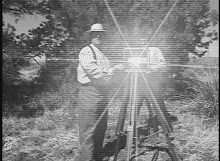Airbender: Elemental Truths
The new film Airbender, based on the popular animated TV series, is worth examining more closely. In the storyline, humanity “is divided into four nations: the Water Tribes, the Earth Kingdom, the Air Nomads, and the Fire Nation. Each nation has its own natural element, on which it bases its society … Each country is also associated with a season: autumn for the Air Nomads, winter for the Water Tribe, spring for the Earth Kingdom and summer for the Fire Nation”. This idea of the world being made up of these four elements is shared by many ancient cultures and philosophies including Hindu, Taoist, Buddhist, and Greek. In the new film, the heroes must save the world, by defeating the Nazi-like industrial Fire Nation and its evil Fire Lord.

It’s interesting that of all the elements fire is the great problem. In fact, each element has a natural destructive capacity. Tornadoes from air, earthquakes from earth, floods from water. Fire in particular however is associated with industry. In 1804, William Blake wrote of the “dark Satanic mills’ in reference to the advent of the Industrial Revolution's destruction of nature and human relationships.
Airbender is an exteriorization of very deep subliminal archetypes. The Pythagoreans called the elements the “Fourfold Roots of Everything”. The ancients believed all was well when the elements were in harmony. This is mirrored in the enduring First Nations worldview here in North America. For example, the contemporary Cree Elder, Pauline Shirt Dodem Kanosha’ states: What we have to do is teach all the four colours so we can work together, all peoples, in a good way.
The influence of the four-fold model, or quaternary, is more present in our lives than we realize. The Western Age of Reason banished holism for centuries. However, the four-fold model resurfaced in the 19th and 20th centuries as a response to the increasing fragmentation of society and alienation from life. My initial research has identified over 35 distinct models introduced between the 1800s and 1990s. Perhaps the best-known example is the work of Carl Jung in the early 20th century. Trained as a psychiatrist he identified four basic psychological temperaments - Thinking, Feeling, Sensation, and Intuition. This pioneering spurred further research and development. Examples include the Myers Briggs Type Indicator and the Keirsey Temperament Sorter. Both psychometric instruments are used in over thirty countries by schools, business, hospitals, non-profits, and the military.
If there's any doubt how deep and pervasive these elemental dynamics are consider the following corporate logos. Hint - fire is red, water is blue, earth is green, and air is yellow [representing breath and spirit] --


